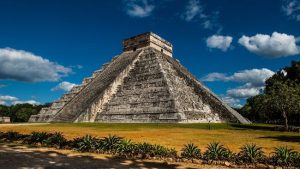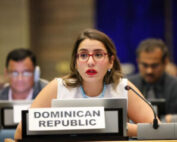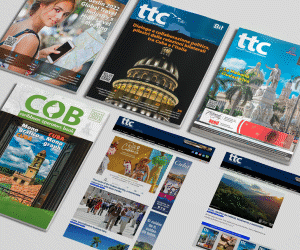Mexico’s Tourism Secretary discusses new administration

Photo: Sefotur.
Surging arrival numbers. New airports and rail service. Increased connectivity. Mexico’s tourism sector is in growth mode, as the administration of President Claudia Sheinbaum ramps up efforts to make Mexico the world’s fifth most-visited country by 2030.
Josefina Rodriguez Zamora, who was appointed Mexico’s secretary of tourism in October 2024 as part of the new Sheinbaum administration, spoke with TravelPulse about what’s new on Mexico’s tourism scene — and what the future might bring.
To what do you attribute Mexico’s impressive growth in international arrivals?
The sustained growth we’ve seen from the U.S. and Canada is due to a combination of strategic factors. First, air connectivity has improved. In the first five months of 2025, more than 7.8 million tourists from these two markets arrived in Mexico — a 6.1 percent increase over the previous year.
The U.S. remains our main source market, with six million tourists [4.2 percent more than the same period in 2024], while Canada shows even stronger growth at 11.6 percent. This also reflects the renewed confidence of international travelers in Mexico as a safe, welcoming and authentic destination.
Additionally, digital promotional campaigns such as “Latidos del Mundo” [Heartbeats of the World] have been key to emotionally connecting with travelers and addressing post-pandemic trends: wellness, nature and authentic experiences.
How does Mexico position itself to compete successfully against other vacation hotspots?
Mexico is unmatched in cultural wealth, rich history and the emotional connection it creates with every traveler. We may have spectacular beaches like other destinations, but what makes Mexico truly unique is that each region has its own identity, distinctive cuisine and a human warmth that’s felt immediately.
Travel advisors can position Mexico not just as a vacation destination, but also as a place for transformational experiences that connect the traveler with a one-of-a-kind cultural and human legacy. Mexico is a destination to fall in love with, to discover and, above all, to revisit again and again.
Mexico has witnessed the opening of new airports in Tulum, Mexico City and Costalegre, as well as the launch of the first-ever international scheduled flights in and out of Tepic, Nayarit. Airports like the ones in Guadalajara and Puerto Vallarta, meanwhile, are expanding. What role does airport development play in Mexico’s tourism growth?
Investments in airport infrastructure are essential to strengthen tourism in Mexico so that every visitor can fully enjoy the grandeur of our country. Airports like Tulum and the new international service in Tepic aren’t just arrival points; they’re real drivers of regional development.
These new facilities and expansions improve access to emerging and less-explored destinations, allowing tourists to explore more corners of Mexico with greater comfort and ease. They also help relieve congestion at [other] airports, enhancing the travel experience from the moment of arrival.
What effect has the new Felipe Ángeles International Airport had on Mexico City and the nation’s air travel scene so far?
Felipe Angeles International Airport has been one of this government’s most significant infrastructure projects. It’s not just a way to ease congestion at Benito Juarez International Airport; it’s also a modern, functional facility — and I dare say one of the nation’s most beautiful airports.
Little by little, domestic and international connectivity has grown, and it’s establishing itself as a viable and convenient alternative for domestic as well as foreign travelers. In addition, the future rail connection with downtown Mexico City will further enhance accessibility and integrate it fully as part of the capital’s mobility network.
The Tren Maya (Mayan Train) was completed at the end of last year. What impact is this new rail service having on tourism, communities and the environment?
The Tren Maya is one of Latin America’s most ambitious sustainable mobility projects. It links five southeastern Mexican states, providing access to archaeological zones, indigenous communities and Magical Towns, with a cultural, social and ecological focus.
So far, it has carried more than 1.3 million passengers and boosted hotel occupancy in the Maya world region. It’s creating jobs and local development while respecting the environment through eco-stations, wildlife corridors and clean energy.

MORE NEWS














